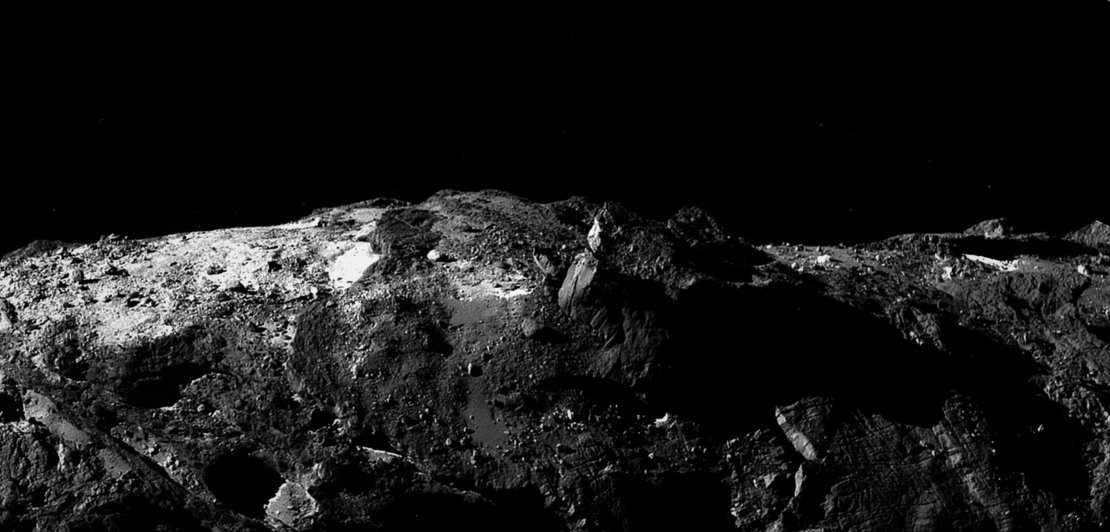Comet's Exotic Terrain Stars in Close-Up View from the Rosetta Probe

If you regard comets as big old dirty snowballs, boringly uniform and featureless, this photo will set you straight.
The newly released image, which was captured in February 2016 by the European Space Agency's (ESA) Rosetta spacecraft and was processed by amateur astronomer Stuart Atkinson, reveals Comet 67P/Churyumov-Gerasimenko as a little world unto itself, with an eye-catching diversity of exotic terrain.
"It shows the uneven, shadowed surface of the comet in detail; particularly prominent just to the right of center is an upright feature surrounded by scattered depressions, rocky outcrops and debris," ESA officials wrote in an image description Monday (Aug. 6).
The $1.3 billion Rosetta mission launched in March 2004 and arrived at the 2.5-mile-wide (4 kilometers), rubber-duck-shaped Comet 67P a decade later, in August 2014. Rosetta studied the comet in detail from orbit for two years, mapping out 26 geological regions.
The Rosetta mother ship also dropped a lander called Philae onto the icy wanderer's surface, in November 2014. No spacecraft had ever pulled off a soft touchdown on a comet before.
The Rosetta mission came to an end on Sept. 30, 2016, when controllers guided the orbiting mother ship to a soft crash landing on 67P's craggy surface. (Philae had already given up the ghost.) Rosetta was running low on energy as the solar-powered orbiter and the comet streaked away from the sun, and the intentional death dive was an effort to squeeze as much science as possible into Rosetta's final act; the spacecraft snapped photos and made measurements all the way down to its doom.
Follow Mike Wall on Twitter @michaeldwall and Google+. Follow us @Spacedotcom, Facebook or Google+. Originally published on Space.com.
Breaking space news, the latest updates on rocket launches, skywatching events and more!

Michael Wall is a Senior Space Writer with Space.com and joined the team in 2010. He primarily covers exoplanets, spaceflight and military space, but has been known to dabble in the space art beat. His book about the search for alien life, "Out There," was published on Nov. 13, 2018. Before becoming a science writer, Michael worked as a herpetologist and wildlife biologist. He has a Ph.D. in evolutionary biology from the University of Sydney, Australia, a bachelor's degree from the University of Arizona, and a graduate certificate in science writing from the University of California, Santa Cruz. To find out what his latest project is, you can follow Michael on Twitter.
